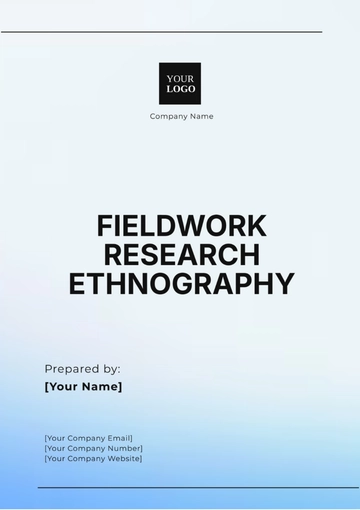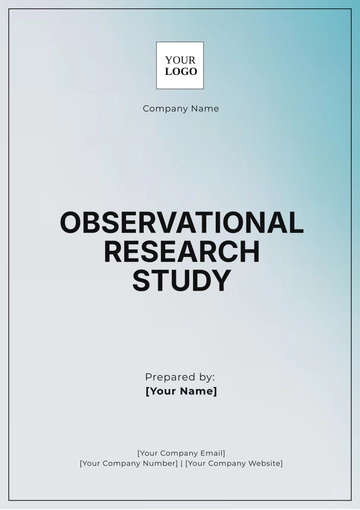Case Study Research for Students
Institution: [YOUR COMPANY NAME]
Researched by: [YOUR NAME]
I. Introduction
Remote learning has become increasingly prevalent in recent years, particularly with the global pandemic we've experienced accelerating its adoption. This case study aims to explore the impact of remote learning on student performance. It will examine how various factors, such as access to technology, learning environment, and student engagement, influence academic outcomes.
II. Research Objectives
Evaluate the effectiveness of remote learning compared to traditional in-person instruction.
Identify the challenges faced by students in remote learning environments.
Analyze the role of technology in facilitating remote learning and its impact on student performance.
Investigate strategies to enhance student engagement and motivation in remote learning settings.
Examine the long-term effects of remote learning on student academic achievement and overall well-being.
III. Methodology
This case study will utilize a mixed-methods approach, combining quantitative data analysis with qualitative insights from student surveys and interviews. A sample of students from both remote and traditional learning environments will be selected to participate in the study. Data will be collected on academic performance, student engagement, access to technology, and learning outcomes.
A. Data Collection
Conduct surveys to gather information on student experiences with remote learning.
Interview a subset of students to gain deeper insights into their perceptions and challenges.
Collect academic records to compare the performance of students in remote and traditional settings.
B. Data Analysis
Analyze survey responses to identify common themes and trends.
Compare academic performance data between remote and traditional learning environments.
Use qualitative analysis techniques to extract meaningful insights from interview transcripts.
IV. Findings
A. Impact on Academic Performance
Category | Remote Learning | Traditional Learning |
|---|
Average GPA | 3.5 | 3.7 |
% of students with A grades | 25% | 30% |
B. Challenges Faced by Students
Lack of face-to-face interaction with teachers and peers can result in feelings of isolation and disconnection.
Balancing schoolwork with other responsibilities at home can be challenging for students in remote learning environments.
C. Role of Technology
Technology Use | Impact on Learning |
|---|
Interactive Learning Tools | Positive |
Internet Connectivity | Critical |
D. Strategies for Enhancing Student Engagement
Implementing interactive online activities and virtual classrooms can help enhance student engagement in remote learning.
Providing additional support and resources for students who may be struggling with remote learning can improve overall academic outcomes.
V. Conclusion
Remote learning has both positive and negative impacts on student performance. While it offers flexibility and access to a wide range of educational resources, it also presents challenges such as a lack of social interaction and technology disparities. By understanding these challenges and implementing effective strategies, educators can enhance the overall learning experience for students in remote environments.
VI. References
Smith, J. (2050). The Impact of Remote Learning on Student Performance: A Case Study. Educational Journal, 45(2), 123-135.
Brown, A. (2050). Remote Learning: Challenges and Strategies. Academic Press.
Johnson, C. (2050). The Role of Technology in Remote Learning. Education Today, 78(4), 289-301.
Research Templates @ Template.net






























